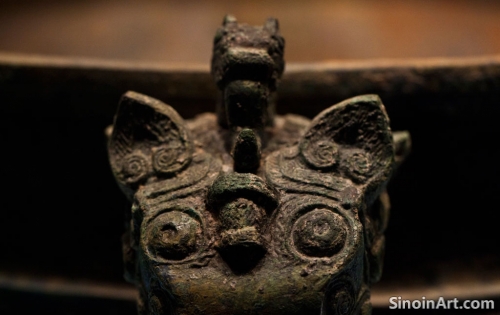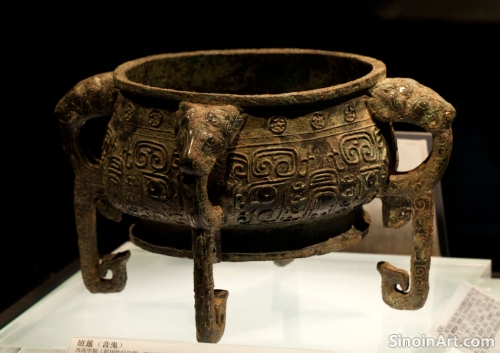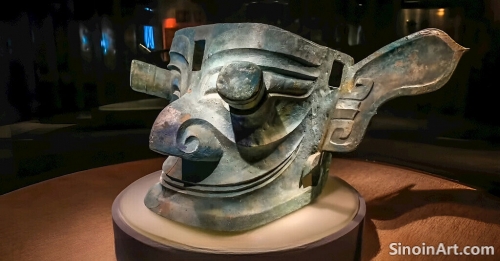The Role of Bronze in Ancient Chinese Communication: Inscriptions, Messages, and Records
|
Beyond their artistic and ritualistic applications, bronze objects in ancient China served as important media for recording and communicating messages, stories, laws, and other forms of written information. The use of bronze as a medium for conveying information highlights the importance placed on written communication during this period. The combination of form, inscription, and visual design helped to emphasize the importance of the information being communicated.  Bronze inscriptions were used to record historical events, royal decrees, treaties, and other important documents, preserving information and conveying a sense of authority, power, and permanence. The durability of bronze, and the permanence of the written form, helped to elevate the status of the information that it was intended to transmit. The integration of writing onto these objects was a way to both transmit and to immortalize information.  The act of inscribing messages on bronze also suggests a belief in the power of language, its importance in communication, and its ability to create enduring records that would last for generations. The care taken in the production of the inscriptions shows the value that was placed on accurate and well formed communication.  The distribution of bronze objects bearing inscriptions also served as a means of disseminating knowledge and power, helping to establish and reinforce social and political systems across ancient China. The wide dissemination of this information helped to create a more cohesive political and social system. The portability of the objects helped to extend the reach of this form of communication. The study of bronze inscriptions reveals the diverse purposes of ancient Chinese writing, highlighting the way that material objects were used to record and transmit information, and to shape both political and cultural life. The use of these objects for communication helps to demonstrate the vital importance of the written word in the ancient Chinese world. |
Tag : bronze inscriptions, ancient Chinese writing, communication media, historical records, inscribed messages
Related information
- Bronze Ware and Ancient Chinese Medicine: Vessels for Preparing and Storing Remedies
- The Use of Bronze in Ancient Chinese Ritual Masks: Power, Transformation, and the Spirit World
- Bronze Ware and the Representation of Power in Ancient Chinese Local Governance: Authority, Control, and Regional Identity
- The Use of Bronze in Ancient Chinese Water Clocks and Timekeeping Devices
- The Use of Bronze in Ancient Chinese Warfare Technology: Beyond Weapons
This article explores the use of bronze in ancient Chinese medicine for preparing and storing remedies, highlighting the creation of specialized vessels and containers, and revealing the connection between metallurgy and traditional healing practices.
This article explores the use of bronze ritual masks in ancient China, highlighting their dramatic designs, their role in invoking spirits, and how the act of wearing these masks facilitated transformation and connection with the spirit world.
This article explores the use of bronze ware to represent power in ancient Chinese local governance, highlighting its role in asserting authority, maintaining order, establishing regional identity, and demonstrating the complex interplay between local and imperial influences.
This article explores the use of bronze in ancient Chinese water clocks and other timekeeping devices, highlighting their complex mechanisms, their integration of astronomical data, and their importance in standardizing time measurement for a variety of purposes.
This article explores the use of bronze in ancient Chinese warfare technology beyond weapons, highlighting its role in creating chariot fittings, siege engine components, and protective armor, showcasing the technological sophistication of the era.